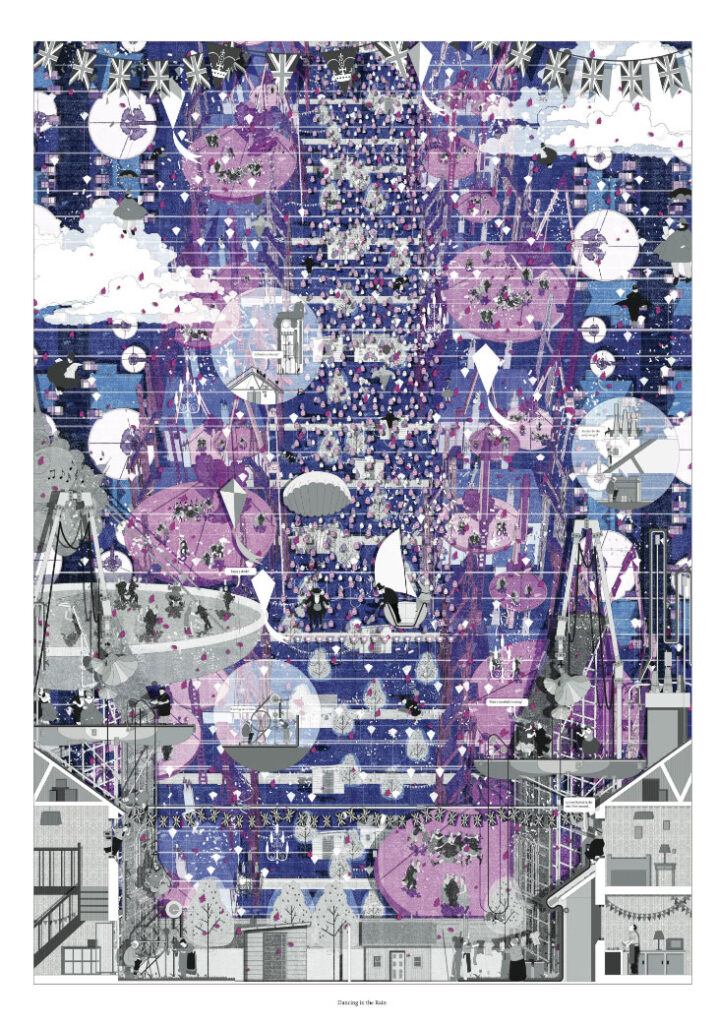By Dieter Kleiner. Dieter is a founding director of RCKa and leads our asset regeneration and community projects. He is an expert in community engagement, and sits on a number of design review panels including the London Boroughs of Haringey and Kingston. Dieter is also a CABE Built Environment Expert. @dieterkleiner

I choose the curateable community from UG Unit 12 by Ashleigh-Paige Fielding, because immediately beneath the usual Bartlett is bonkers shape-shifting and structural gymnastics is a genuine and perhaps realisable ambition to acknowledge and grapple with the social effects of gentrification.
Set in the East Village of New York, the proposal seeks to retain what developers often forget makes a place attractive; the resident community, who encouraged by a sense of ownership. invest time, energy and spirit in a place.
It is described as ‘a pioneering social housing scheme of curateable technologies that allow personalisation within the home, and influence of wider estate decisions about the use and appropriation of space’.It is the project’s latter emphasis on the integration of a vibrant new interconnected network of public realm, shared amenity facilities and truly affordable housing for existing artists and residents that is of most interest.
This move accepts gentrification, but ensures existing residents get best access to new leisure and amenity provision as they are both located on new circulation networks. In-doing, circulation space is activated, and serves to bring existing and new residents together, thus encouraging social cohesion, which just so happens to mirror much of the work of our practice!

My second selection was more difficult. I was torn between Vasilis Marcou Ilchuk’s project from Unit 17, in which beautiful stories and imagery investigate relationships between the intangible poetics of architecture and mathematics, and the frankly unbelievably rich graphic output of Nathan Fairbrother from Unit 10.
In the end I plumped for the money shot from Unit 10 / well Blueprint is a publication after all! But whilst accepting my fate, and mourning the sad loss of meaning in much architecture – its dezeenification if you like – I was struck by the potential of such sumptuous imagery to reach deep into society’s subconsciousness and engage purposefully in architecture’s wider political context.
This is an incredibly important role that architects eschew to the detriment of the profession, and one poignantly evident in the work of Unit 10, which beguiles and draws the observer in to reveal a not-so-hidden political narrative.